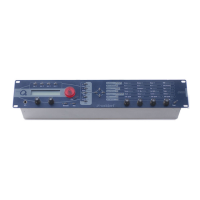Sound Parameters – Oscillator Section
63 Waldorf microQ User´s Manual
Try out very lively sounds by using different fast modulation sources (LFOs or envelopes) on
Oscillator 1 set to Alt1 and Oscillator 2 set to Alt2, and additionally ring- and frequency-
modulating the signal.
Please note that additional Suboscillators are available when using Alt1 and Alt2 (see the
chapter „Suboscillator“).
PWM -64…+63
PWM stands for pulsewidth modulation. This parameter determines the amount of modulation that is
applied to the pulsewidth of the oscillator’s square wave. If Alt1 or Alt2 is selected, PWM determines
the amount of the wavetable modulation. If you select any shape other than Pulse, Alt1 or Alt2, this
parameter does not have any effect. The modulation source that affects the pulsewidth is selected by
the source parameter described below.
PWM Source see Table “Fast Modulation Sources”
Selects the source of the pulsewidth modulation or the wavetable modulation. Common sources for
pulsewidth modulation are envelopes and LFOs, but other sources like the modulation wheel or
aftertouch can create nice effects as well.
To create a thick oscillator sound, use a triangular LFO as PWM Source with full PWM and a
Pulsewidth of around 80. This basic setting is useful for very big string and lead sounds. When
you play different notes on the keyboard, you might notice that bass notes sound more detuned
than higher notes. To avoid this behaviour, set Keytrack of the used LFO to a positive setting
between 50% and 100%.
To create a Bass sound, use a decaying Envelope as PWM Source with negative PWM and a
Pulsewidth of around 80…127. This results in a fat attack phase, especially when only one
oscillator is used for the Bass.
When you want to create a sound with a wave sweep, you should set the startpoint roughly
(Pulsewidth) at the desired wave, before you apply any modulation. This will help you to find
the basic waveform, before the effect of modulations. Note that you can apply unipolar and
bipolar modulation sources . For example, set Pulsewidth to 64, which is almost the middle of
the wavetable and apply a slow running LFO to PWM Source to sweep through the whole
wavetable.

